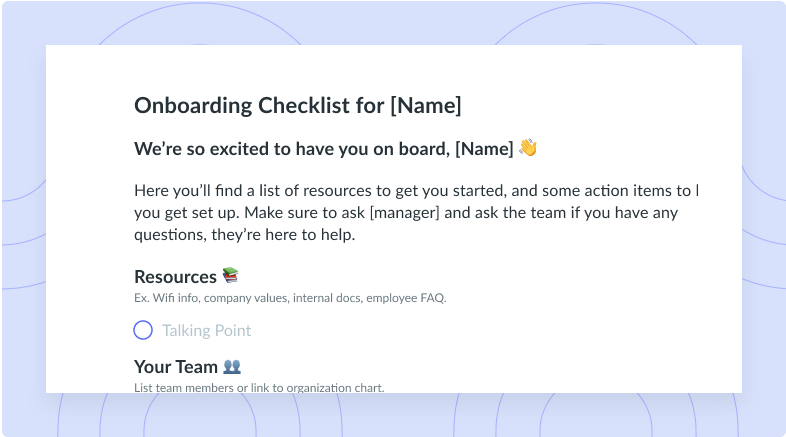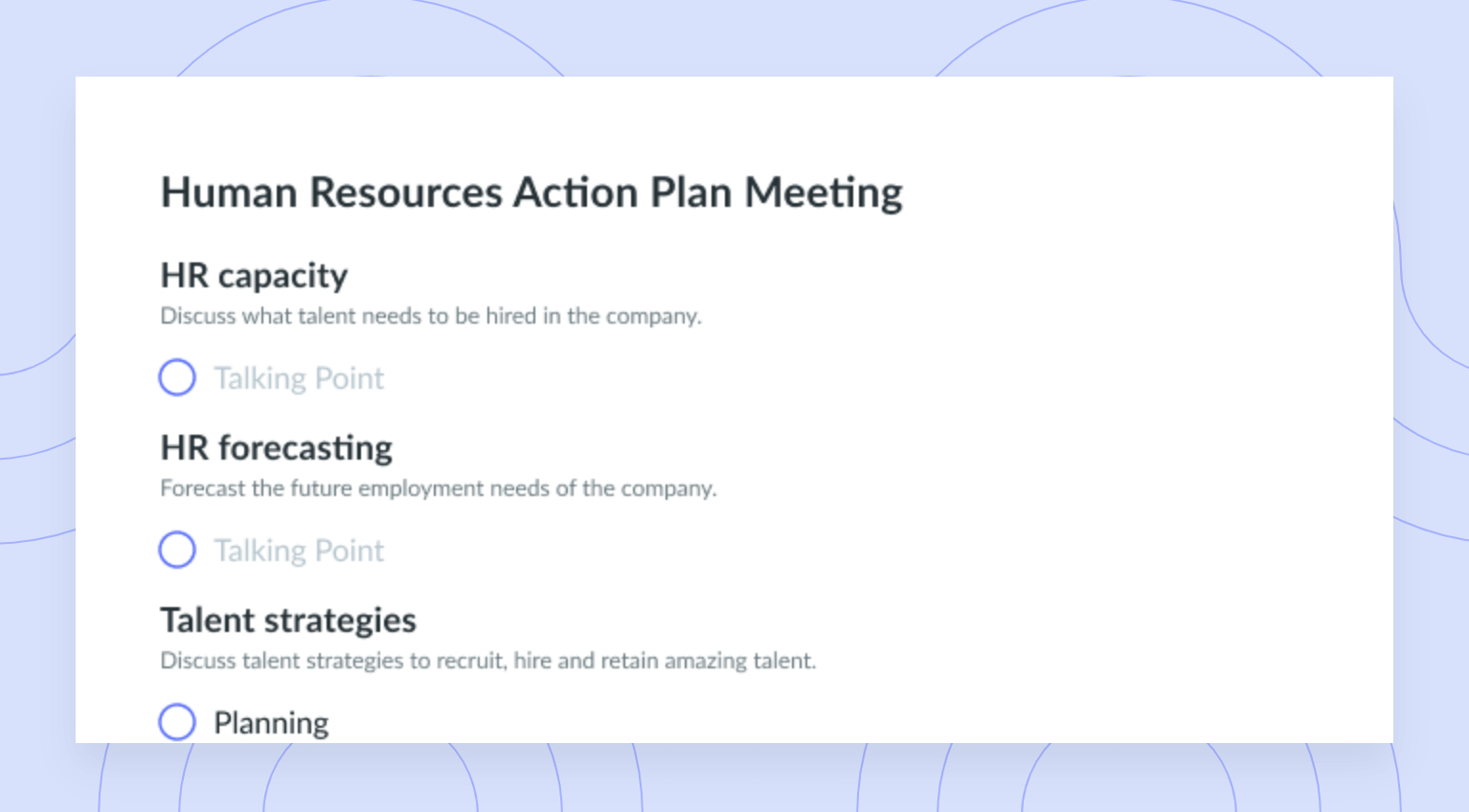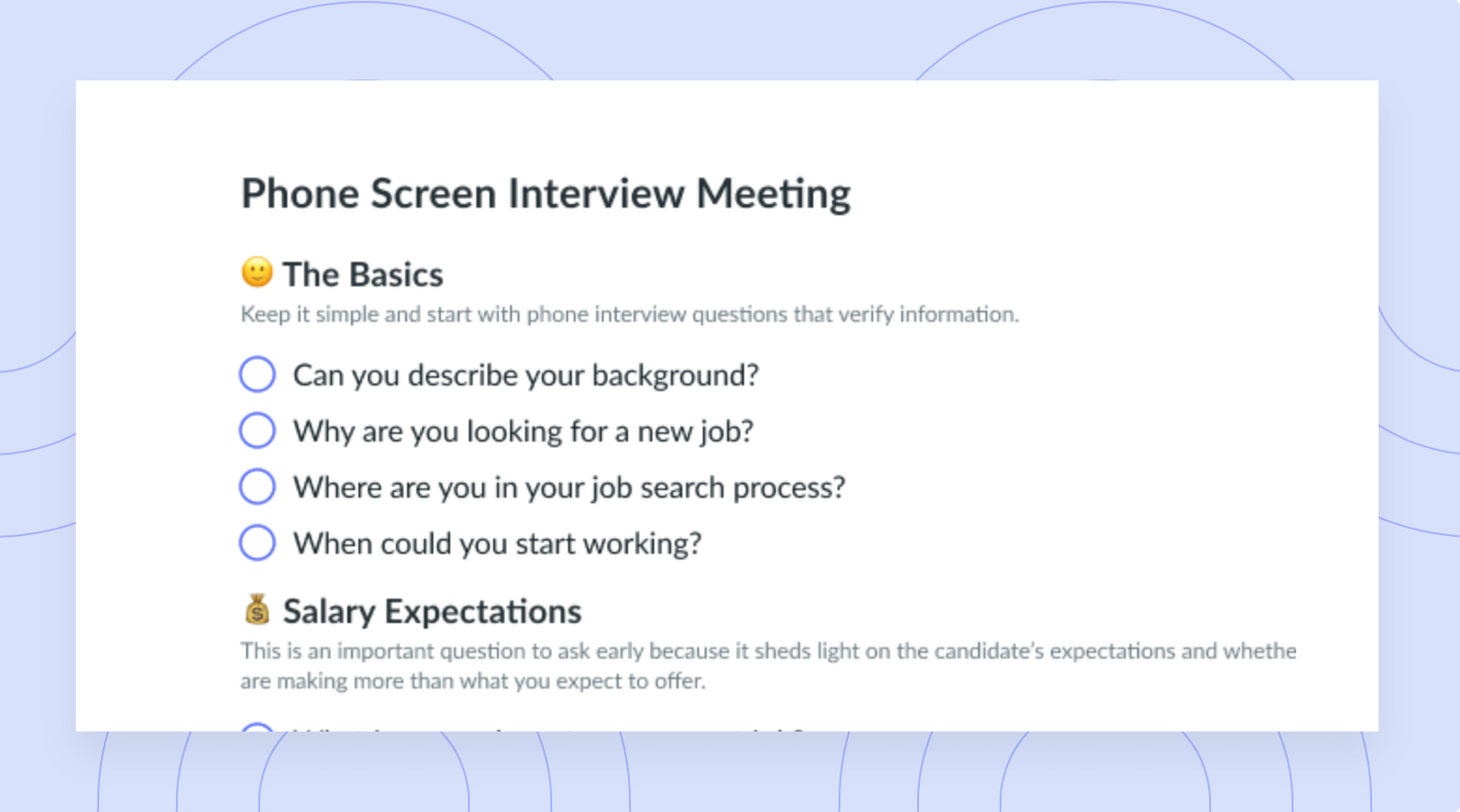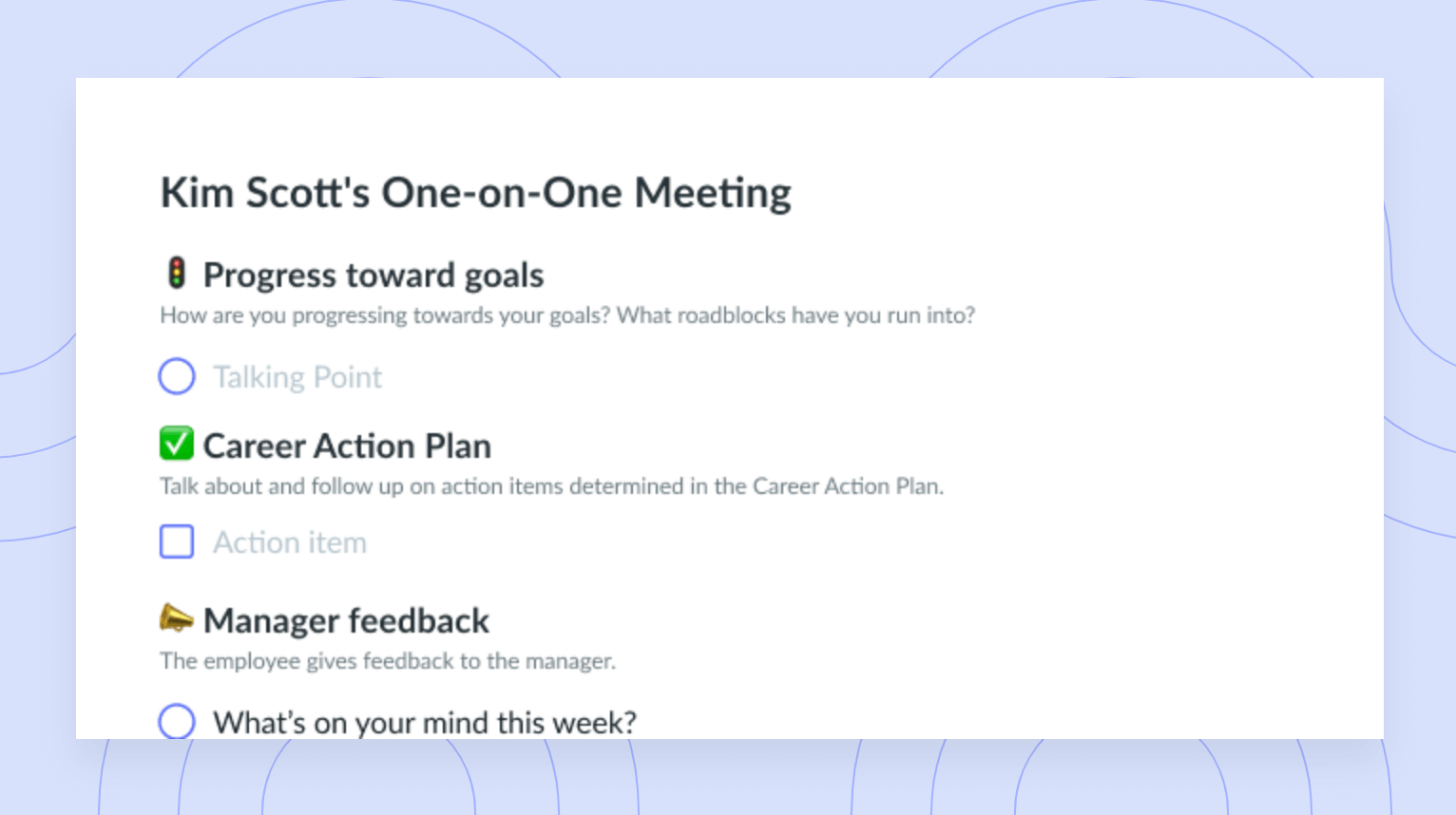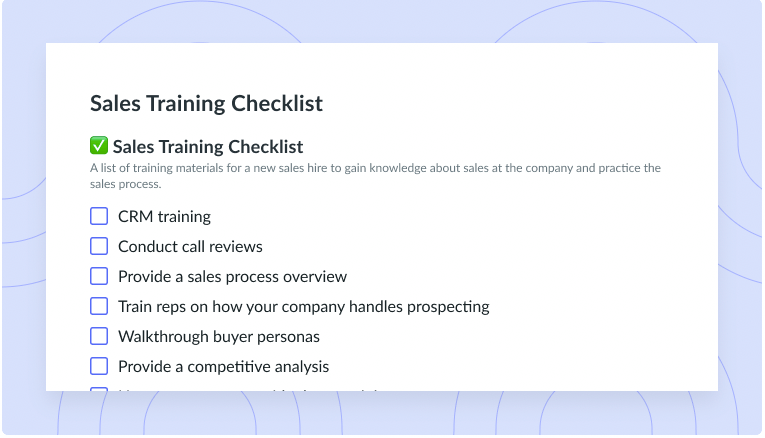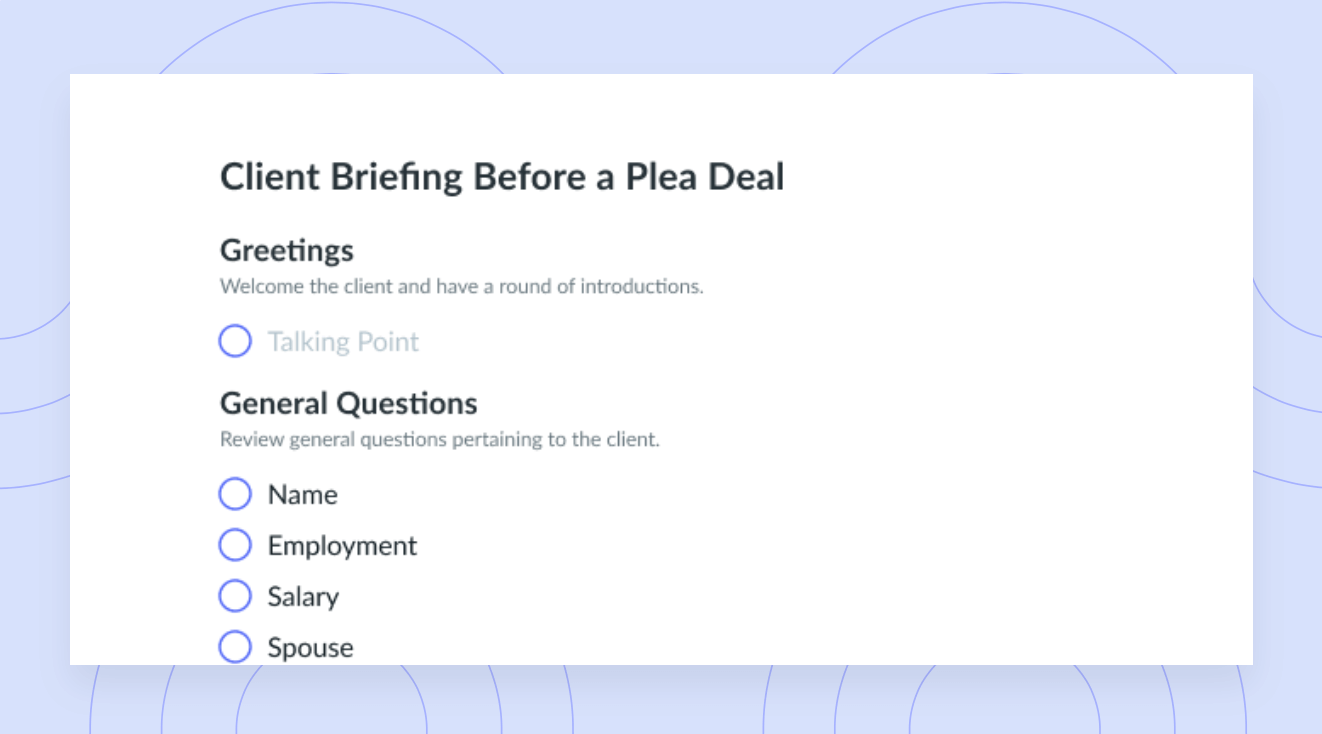4 Different Types of Employees and How to Manage Them
Before hiring a new team member, it's important to understand your options in regard to different types of workers. Learn the main differences between full-time, part-time, seasonal, and temporary employees.
It’s hard to keep up with all of the different types of employees. For that reason, the Fellow.app team has created this guide on different types of employees – and how to manage them most effectively. Here, you’ll find a description of the different types of workers and how to best manage each group accordingly.
Using these considerations and best practices will equip you to feel confident managing your employees in a personalized way, so that you can secure healthy relationships and promote an impressive level of productivity throughout your organization.
Back to basics: What is an employee, anyway?
An employee is an individual that is hired by either a person or an organization to perform work for that person or organization. This person or organization is referred to as the employer.
Additional factors that make someone an employee:
- The person is on the company’s payroll and receives a salary
- They are eligible for benefits and/or perks offered by the employer
- The person is protected by law in terms of wages and employment rights
- The individual has signed an Employment Agreement to outline job descriptions, compensation and other details
Types of employees:
The most common employee types of classification include:
1 Full-Time Employees
Full-time employees typically work an average of 40 hours a week and are eligible for benefits such as health, dental, vacation days and paid time off. An employment agreement is typically provided by the employer, that outlines the responsibilities of the employee, the extent of their services (hours and days of work), benefits provided, termination, notices and applicable law.

Pro Tip
Use a meeting management tool like Fellow to organize your meetings. The best way to manage your time accordingly is through using supporting softwares like Fellow. Try using a tool like Fellow!

Best practices to manage full-time employees:
Build a relationship
It is so important to build a relationship with your full-time employees from day one. Go the extra mile to build trust and make sure that your employee is comfortable with their responsibilities, their environment and their team. Team-building exercises are a great way to acquaint new employees with the rest of the team and get to know them personally.
If you are looking for a more direct way to get to know your full-time employees, one-on-one meetings are a great option. Effective one-on-ones will help them feel more comfortable and therefore more productive as well.
During your next one-on-one meeting with a full time employee, be sure to collaborate on the agenda in advance and let them know that you are there to support them in any way they need. A great way to do this is to use a collaborative meeting tool like Fellow where you’ll be able to collaborate, take notes, and maintain a record of everything that you discussed.

Know what’s most Important to them
If you can understand what is most important to your employees, you can work towards accommodating their needs as best as possible. In Radical Candor, Kim Scott argues that career conversations help managers get a better understanding of their direct reports’s aspirations and motivations – in other words, what’s most important to them. These career conversations can happen in your regular one-on-one meetings or during dedicated conversations every 6 months.
Prioritize organization
Organization and time-management are essential when it comes to managing multiple full-time employees. Find a regular meeting cadence that works for your team and helps everyone stay aligned. We recommend scheduling a weekly team meeting and one-on-ones with each person that reports to you. Lead by example and show your direct reports how you stay on top of your responsibilities and strive towards success.
Set clear goals and expectations
Setting clear goals and expectations is extremely important with full-time employees. And more important than setting goals is documenting them in your one-on-one meeting tool.
You can’t manage what you can’t measure, and setting clear-cut goals will leave both you and your employees feeling ready to take on the next challenge. Defining metrics that will allow you and your employees to understand if they are delivering on the company goals is a must. Ongoing, clear communication is at the base of goal-setting and should be made a priority.
Be open to feedback throughout the year
Consider making feedback more constant and more casual between you and your team. Often, companies limit their feedback reviews to a yearly-review but full-time employees should be able to receive and give feedback year-round.
Evaluating your employees’ progress is difficult without real-time feedback – which can include both positive and constructive feedback. Remember that an especially important form of feedback is positive reinforcement. Try to put a focus on acknowledging your employees’ successes to continue motivating them to reach their potential.
Finally, don’t forget to welcome feedback as much as you receive it, leaving all channels of communication open and approachable.

2 Part-Time Employees
Part-time employees work less than the ~40 hours that full-time employees clock in for, and they may not be salaried like a full-time employee. According to Indeed:
“Part-time employees are individuals who work less than 40 hours a week and are typically paid by the hour rather than salaried. These employees are still considered legitimate employees of a company but may not be eligible for benefits.”
Best practices to manage part-time employees:
Consider their need for flexibility
It is highly likely that if your employee has sought out part-time work, it is due to their need for flexibility or work-life balance. On tips for managing part-time employees, Flexjobs highlights:
“During conversations, interactions, and goal-setting meetings, keep the need for flexibility in mind. It might take a bit of shuffling or careful planning, but you’ll keep a loyal employee if you work with them.”
Provide the needed resources and tools
Regardless of which type of employee you are managing, you want to always ensure that they are feeling equipped to do their job properly. The same goes for confirming that your part-time employee has all that they need in order to execute the job at hand successfully. It’s a great idea to include frequently used resources and tools as a part of your onboarding process, as a document that can often be consistently referred to. This document can be a shared Google Doc, or based in a meeting productivity tool like Fellow. Either way, your part-time employee will be able to refer back to the resources whenever they need them.
Keep communication lines open
You and your part-time employees are likely to have very different schedules. For that reason, it is important to foster constant communication with them. Living in an age of technology allows us to reach out to one another through so many different means such as email, instant chats, phone calls, video calls, etc. Find which approach works best for you and your part-time employee and don’t forget to let them know that you are available if they ever have any questions, issues, updates, or simply want to touch base.

Offer opportunities for advancement
Just because your part-time employees aren’t in the office as much as others, it doesn’t mean that their professional development should be compromised. Investing some time in training employees is going to make them more effective in fulfilling their responsibilities, thus making them even more of an asset to your team. Not only will training enrich your part-time employees’ competencies, but it will show them that you prioritize their learning and development.
Include them in regular meetings
As a leader, you already know that communication is everything. The more frequent, the more effective. There is no reason not to include your part-time employees in your regular meetings to promote open communication channels and to strengthen the relationship between your team members.

Don’t limit part-timers to certain jobs
We often associate part-time jobs being at a lower, less professional career level. It is definitely time to squash that stigma and utilize the abundance of highly skilled, part-time employees, without limiting them to less demanding positions.
3 Seasonal Employees
Seasonal employees are individuals who are hired for a short period of time, based on a company’s needs. Generally, they help with increased work demand or seasonal work that arises in specific times of the year.
Best practices to manage seasonal employees:
Start recruiting early
Get ahead of the game to acquire the best talent available! Quickbooks reveals some surprising statistics about when you should start recruiting your seasonal employees:
“Seventy percent of hourly employers expect to have their summer positions filled in either April or May. For the winter holiday season, some employers even start hiring as early as August.”
Treat them the same as full-time employees
Seasonal employees are very much still a part of your team and should be treated the same as anyone else in your group. Making your seasonal employees feel as if they are fully welcomed and an integral part of your team is going to motivate them to keep their performance standards at an impressive level.

Don’t skip on training
Training for seasonal employees is as important as training any other type of employee. You are doing both yourself and the employee a favour by equipping them all of the tools and resources available to them. If you’re impressed with their performance, you’ll probably consider bringing them back next season, which will set you up with someone who already knows the drill.
Be clear about expectations
Clearly defining your expectations for the season is essential for the success of this employee-employer relationship. Make sure that you communicate if there is a possibility for extension after the “season” or if employment will end there. Clearly document your expectations for the work- term to eliminate any confusion before you even begin.
4 Temporary Employees
Temporary employees are generally hired on a temporary basis for a set period of time, such as six months. They may also be hired to work on a specific project and stop working for the company when the project is complete.
Best practices to manage temporary employees:
Set them up for success
By now, we’ve made it obvious that training is essential for every type of employee! In an article about how to be a short-term boss, Masis Staffing recommends an abbreviated training to tailor your approach, specific to the temporary employee you are working with:
“If you want your short-term hire to have long-term benefits, take the time to create an abbreviated training.”
Give feedback and ask for it too
All good employees continue to look for ways to improve, just like any good manager does. Make sure that you give feedback to your temporary employees that will help them increase their experience and maybe even lead them to a full-time job, if desired. Likewise, use this opportunity to ask for their feedback on how you can continue to lead effectively.

Do your best to learn from them
Because temporary employees are typically only hired for a set time period, they are sure to have some valuable perspectives on the way that things are operating. Use this time to learn and gain any insights that your temporary employee may have. It is likely to provide some information you may otherwise not be aware of.
Closing Thoughts
It is clear that all of your employees deserve your time and attention. Refer back to this guide to modify your management style, based on what types of employees you have in your team. Tailoring your approach will be sure to improve communications, productivity and your relationship with your group. Find a summary below of the types of employment and best practices for each type of employee:
Types of Employment and Best Practices
- Full-Time Employees
- Build a Relationship
- Know What’s Most Important to Them
- Prioritize Organization
- Set Clear Goals and Expectations
- Be Open to Feedback Throughout the Year
- Part-Time Employees
- Consider their Need for Flexibility
- Provide the Needed Resources and Tools
- Keep Communication Lines Open
- Offer Opportunities for Advancement
- Include them in Regular Meetings
- Don’t Limit Part-Timers to Certain Jobs
- Seasonal Employees
- Start Recruiting Early
- Treat Them the Same as Full-Time Employees
- Don’t Skip on Training
- Be Clear About Expectations
- Temporary Employees
- Set them up for Success
- Give Feedback and Ask for it Too
- Do Your Best to Learn From Them



![8 Types of Company Culture [with Examples]](https://fellow.app/wp-content/uploads/2020/10/Types-Company-Culture.jpg)

![12 Common Types of Meetings [+ Free Agenda]](https://fellow.app/wp-content/uploads/2022/08/Types-of-Meetings-2.jpg)



